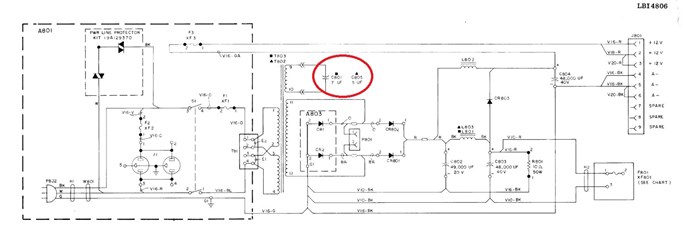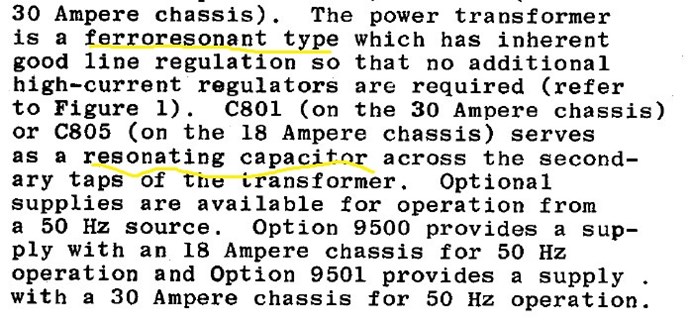I transferred my thread on Non Linear Resonance here to BeyondUnity.org
Non Linear Resonance
- 15K Views
- Last Post 26 September 2025
At the input I only consume P=E I 5v x 19 ma = 0.095 watt
and at the output I have 7Uf x 550v squared /2 and divide by 2.5 sec average = 0.4235 watt per second
Jagau
Hello everyone.
You're right, power is energy per frequency (Ef) or energy between time (E / t)
as well as voltage per DC current.
So the energy expended to produce 550V in a 7uF capacitor is ...
EIt = 5 * 0.019 * 2.5 = 0.2375 joules.
Let's calculate the energy stored in the capacitor ...
E = Vc ^ 2C / 2 = (550 ^ 2 * 7 * 10 ^ -6) / 2 = 1.05875 joules.
The energy efficiency is Eout / Ein = 1.05875 / 0.2375 = 4.4579.
Corroborating your calculations.
@Jagau.
Yes, it definitely shows AU.
In all the experiments I have done I always had the same
problem, only E appeared but nothing of I.
The only solution I found was through capacitors, these
they store charge E and have the property to use time to
produce I, since charge equals current times (Q = it).
It was for this reason that I dedicated myself to finding another way.
Bravo, good demonstration, we must analyze how it can be done
so that it is 100% functional in closed loop.
Note:
If you look closely at the input waveform, you will see that your system
it is ferro-resonant, it is necessary to obtain loads and it is
with what Nikola Tesla discovered in his time in another way.
YoElMiCrO.
Hi Yo
I had a lot of trouble sleeping last night.
I redid the calculations several times in my head
I am very happy to see that you both confirm AU
I am very happy to have realized this in the site here BeyondUnity.org
BeyondUnity.org is the future
Thank you
Jagau
Hi all
For those who would be interested in building, something you should know when making your 3 coils, they must be wrapped one on top of the other with a gap made of electrical tape (air space) between each coil.
In fact it is as described in the patent of Andrey Melnichenko:
This is obtained by the presence of a weakly magnetic air or space, resulting in a magnetic field energy greater than the work of the current source to be magnetized and which can be converted into electricity during demagnetization.
In addition, the 3 coils must have the same number of turns which ensures the same inductance. By doing this the second and third coils will be a few turns longer, as Don Smith mentioned, a few turns longer on a two-sided side compare to first one.
Jagau
Hi Jagau.
I'll try as soon as I have the shortest time.
Thanks for sharing the data.
I have a question, what are the characteristics of the capacitor
that you have connected, it looks like oil.
Thank you in advance.
YoElMiCrO.
Hello yo
For the condenser not sure if it is with oil it is what General Electric used in the power supply of high power. It is a Delektrol number 19A13457P2
I believe that the specs can be found on the internet.
For spec: 7 Uf-660vac GE trade mark.
I have 2 of these capacitor, it was used in power supply CVT in conjunction with a special Xfo built in the 1960s, maybe the floyd sweet team worked on this plan, being himself an ex employee of GE in usa.
I send you a schematic, they even used ferromagnetic transformer technology at that time.
I joint you a description form the book of this P.S.
P.S. I will redraw my schematic, he is difficult to follow,I will do it again for a better understanding
Have a nice day
Jagau
Hi Jagau.
Thanks again for the info.
I tell you that I have searched the net for the capacitor unsuccessfully.
Yesterday I did a quick experiment with your next analysis.
I have to say that you found the method at least current
ideal for storing this electric field that has no current,
but due to the capacity of capacitors to integrate current
we can have real energy from them while storing electrostatic charges.
This is due to the type of capacitor in question, I am still looking for its characteristics.
If I am right, changing the type of capacitor you would see that it stops working,
Well, my experiment did not work, having all the parameters the same.
Today I will try to find the ideal capacitor to be able to replicate your system.
You can change the configuration according to my analysis, because I think I know
what is its operating principle.
After doing more experiments I will tell you my results.
Thanks again.
YoElMiCrO.
Hello Yo
A photo of the condenser part number.
DIELEKTROL no pcb, the fact that they write no pcb probably means in oil but without pcb.
You probably know IEEE
They published an article on dielektrol II a long time ago
here is the link on the article
https://ieeexplore.ieee.org/document/4080869
For my part I will repeat the test with different capacitor to check if I have a difference in the effect
Jagau
Hey Jagau
Excellent experiment, very simple and conclusive. The capacitor is almost certainly oil filled, the Russian investigator Sergei Deyna also mentioned some experiments with predominantly longitudinal oscillations to result much better with this oil filled capacitors.
Today I had a couple of hours free and tried to make a similar setup as yours, using a small EE30 ferrite with tree coils 35T each. As I didn't have a capacitor of this type, I used a 330uF 400V electrolytic for collection. I could dot get the ferro resonant oscillation, likely too poor self capacitance of my coil, so I added a 100nF cap in series with the entrance and then could see the effect. In a narrow frequency range I could bring the cap up to nearly 70V with 8Vpp fed with a half bridge. I didn't make measurements and math's for the moment, will go on playing with this to see how to increase the effect. I tried with a gapped core for comparison, but the efficiency seems to be better with out gap.
Thank's for sharing.
Vidura.
Vidura
Hello Vidura
Excellent, I'm glad it worked for you too.
If you have microwave oven condensers, this works very well with this type as well.
thanks for the feedback, keep me posted
I am making a small list of capacitors with which it works
Jagau
No one online at the moment
-

-
-

-

-
-

-
-

-

-







